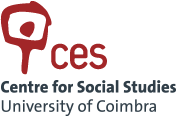Meeting
18th Meeting of the International Movement for a New Museology
October 12 to 14, 2017
Museo Provincial Superior de Bellas Artes Evita (Cordoba-Argentina)
Abstract
ICOM's International Committee for New Museology - MINOM brings together museum workers and cultural institutions that, through direct action in their communities, take on the debates, interests and social proposals of the connectivities in which they are involved as mediators and equity educators.
Each year, MINOM members organise regional meetings and exchanges open to every interested community. The New Museology, which came forth in 1972 during the Roundtable in Santiago de Chile, proposes an anthropological approach to heritage, setting the object aside to focus on the subjects and social, cultural, symbolic, political and economic relations that fostered its materiality and its immateriality. Accordingly, focus goes from the object to people and social groups. For the first time, the International Conferences of MINOM will take place in our country, on the other side of the mountain range, where the option of museums with-and-for the community was proposed for the first time. In this context, we invite you to address the deeply relevant topics of our region:
TOPIC 1: Museums, patrimonial actions and educational experiences in places of confinement.
Youth and adults deprived of liberty are placed into closed regime institutions historically associated with control and standardization purposes. This perspective, altered due to the contribution of human rights, gives rise to other possible experiences - liberating experiences - within these spaces. The museum as a space of communication and construction of meanings and heritage as the materiality that holds in itself the memory and individual and collective identities opens up as a right and a tool in view of the social need to develop possibilities to transform the state of affairs.
TOPIC 2: Museums and heritage actions regarding gender issues.
It is well worth to visit any museum in the world to find artistic expressions or material references that have contributed to perpetuate practices by naturalizing inequality and other forms of violence. The delineation of resources of the feminine and of the social role of women does not escape this debate, to give merely one example. Faced with the paradigm shift, it is opportune to analyse how museums and the interpretation of the heritage they hold favour other constructions and possible acknowledgments of the gender issue in their wide and rich diversity.

